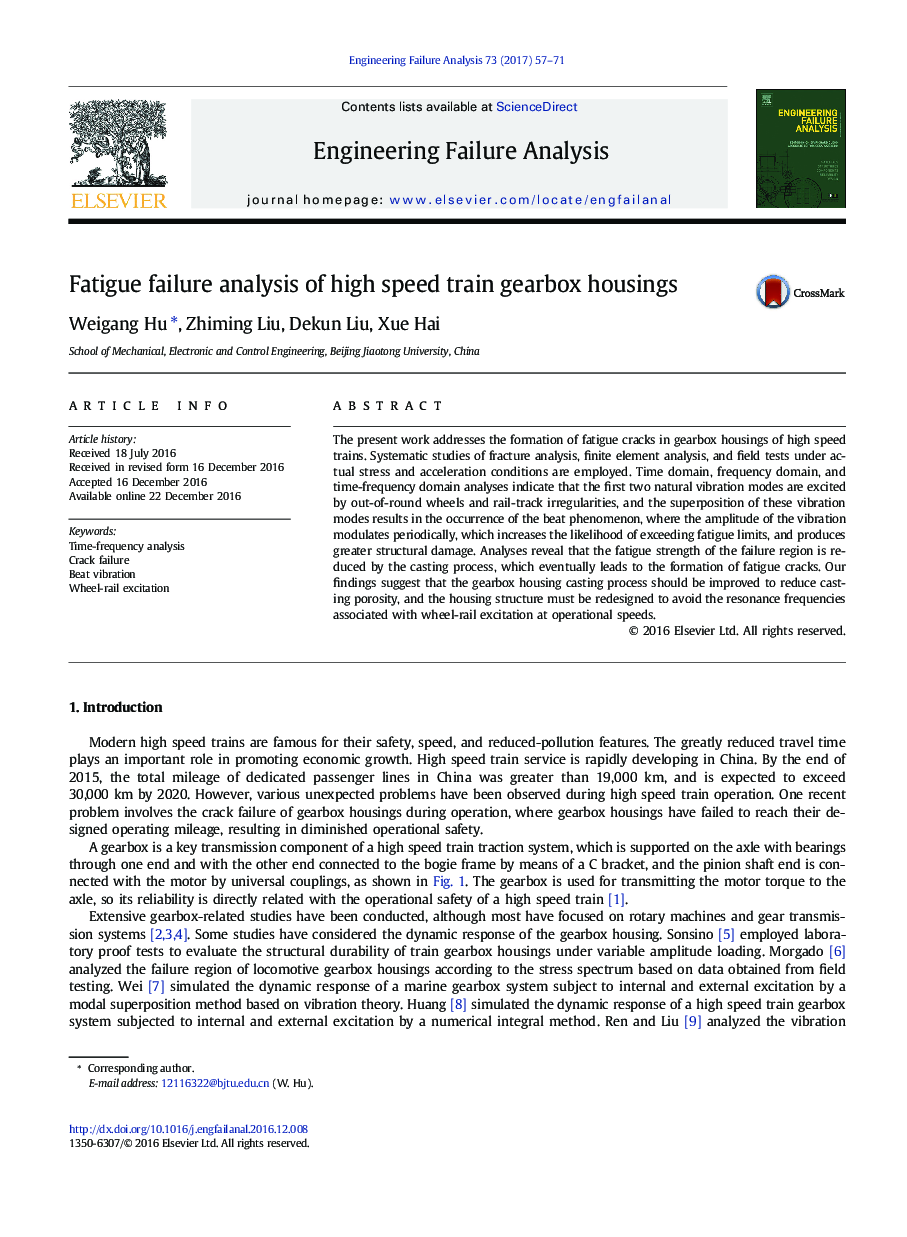| Article ID | Journal | Published Year | Pages | File Type |
|---|---|---|---|---|
| 5013663 | Engineering Failure Analysis | 2017 | 15 Pages |
Abstract
The present work addresses the formation of fatigue cracks in gearbox housings of high speed trains. Systematic studies of fracture analysis, finite element analysis, and field tests under actual stress and acceleration conditions are employed. Time domain, frequency domain, and time-frequency domain analyses indicate that the first two natural vibration modes are excited by out-of-round wheels and rail-track irregularities, and the superposition of these vibration modes results in the occurrence of the beat phenomenon, where the amplitude of the vibration modulates periodically, which increases the likelihood of exceeding fatigue limits, and produces greater structural damage. Analyses reveal that the fatigue strength of the failure region is reduced by the casting process, which eventually leads to the formation of fatigue cracks. Our findings suggest that the gearbox housing casting process should be improved to reduce casting porosity, and the housing structure must be redesigned to avoid the resonance frequencies associated with wheel-rail excitation at operational speeds.
Keywords
Related Topics
Physical Sciences and Engineering
Engineering
Industrial and Manufacturing Engineering
Authors
Weigang Hu, Zhiming Liu, Dekun Liu, Xue Hai,
